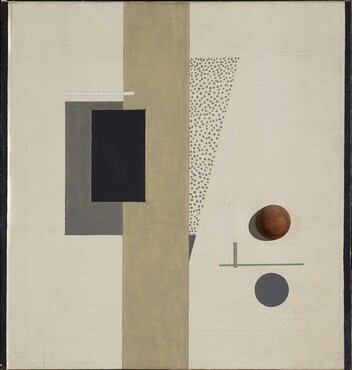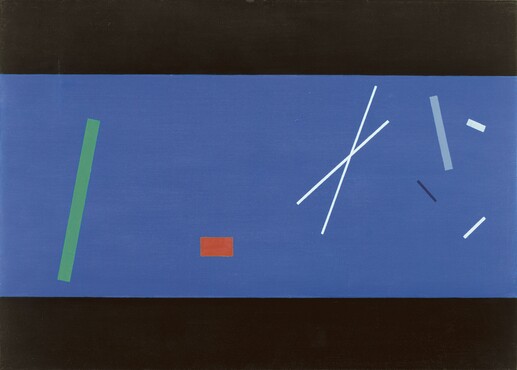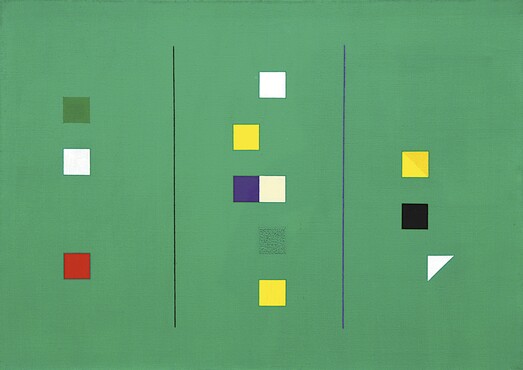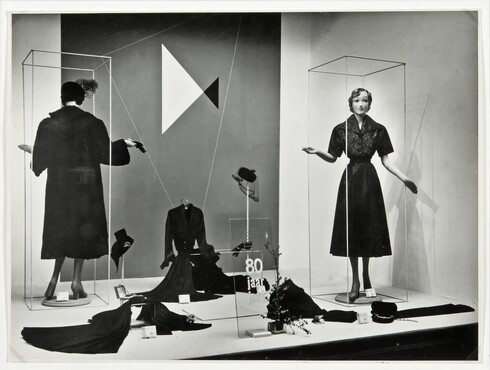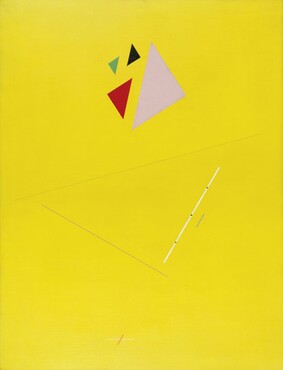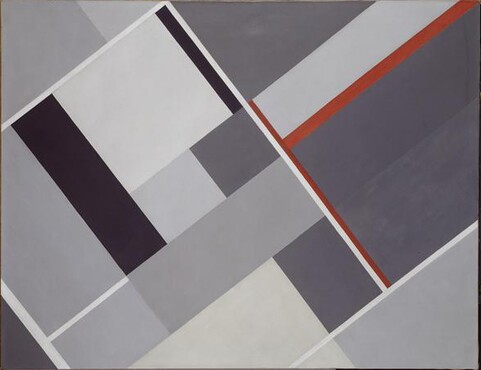Ontdek de collectie
Kunstmuseum Den Haag has a treasure chamber of over 160.000 pieces of art. Here we work on making the highlights from this collection available online.
Friedrich Vordemberge-Gildewart
Between Constructivism and De Stijl
In 1925 German artist Friedrich Vordemberge-Gildewart (1899 - 1962) gave two of his paintings to Theo van Doesburg in exchange for his Counter-Composition VI. One of these paintings, Konstruktion No. 5, was recently added to Kunstmuseum Den Haag’s collection. The purchase was assisted by the Mondrian Fund and the Rembrandt Association, courtesy of its E.A. and C.M. Alkema-Hilbrands Fund and its Modern Art Fund. The painting will be on display in the museum’s Mondrian & De Stijl wing from 22 February, as part of the exhibition Friedrich Vordemberge-Gildewart – Between Constructivism and De Stijl.
Friedrich Vordemberge-Gildewart did not paint his canvases, he constructed them, using pencil sketches and paper cut-outs to decide on the colours and shapes, and their position in the image. It was by this method that he made Konstruktion No. 5 in 1924, a work in which a wooden half-sphere protrudes from the flat surface. It was made at his studio in Hannover, which a year earlier was still being used by Russian artist El Lissitzky. He and Vordemberge-Gildewart shared a great interest in graphic design and spatial structures.
The painting came into Theo van Doesburg’s possession in 1925 through an exchange that probably took place in connection with the L’art d’aujourd’hui exhibition in Paris. The exhibition was the young Vordemberge-Gildewart’s first public exposure in an international context. During this period, he developed close ties with Van Doesburg and other artists of De Stijl who, like him, were fervent advocates of abstract art. Vordemberge-Gildewart did not however stick only to the primary colour scheme of red, blue and yellow, and he also used diagonals and three-dimensionality in his work. Van Doesburg regarded him as an ideal ally in his clashes with Mondrian, who emphatically opted for neoplasticism and straight lines.
Dutch period
In 1938 Vordemberge-Gildewart fled Nazi Germany – as did many other avant-garde artists – and ended up in Amsterdam. Willem Sandberg invited him to take part in a major international exhibition of abstract art at the Stedelijk Museum (Abstracte Kunst, 1938). During his time in the Netherlands, which lasted until 1954, Vordemberge-Gildewart got to know other influential artists and art lovers. He collaborated with architect Mart Stam, for example, and became friends with Max Beckmann, another German painter who had fled to Amsterdam.
Konstruktion No. 5 will be on display in Kunstmuseum Den Haag’s Mondrian & De Stijl wing from 29 February to 21 June 2020, as part of an exhibition highlighting Vordemberge-Gildewart’s early period and his time in the Netherlands. It will include his designs for luxury department store De Bijenkorf, design sketches for a PTT head office in The Hague (which was never built) and some magnificent works on loan from Museum Wiesbaden, the custodian of a rich and varied collection of work by Vordemberge-Gildewart, as well as his personal archive.

